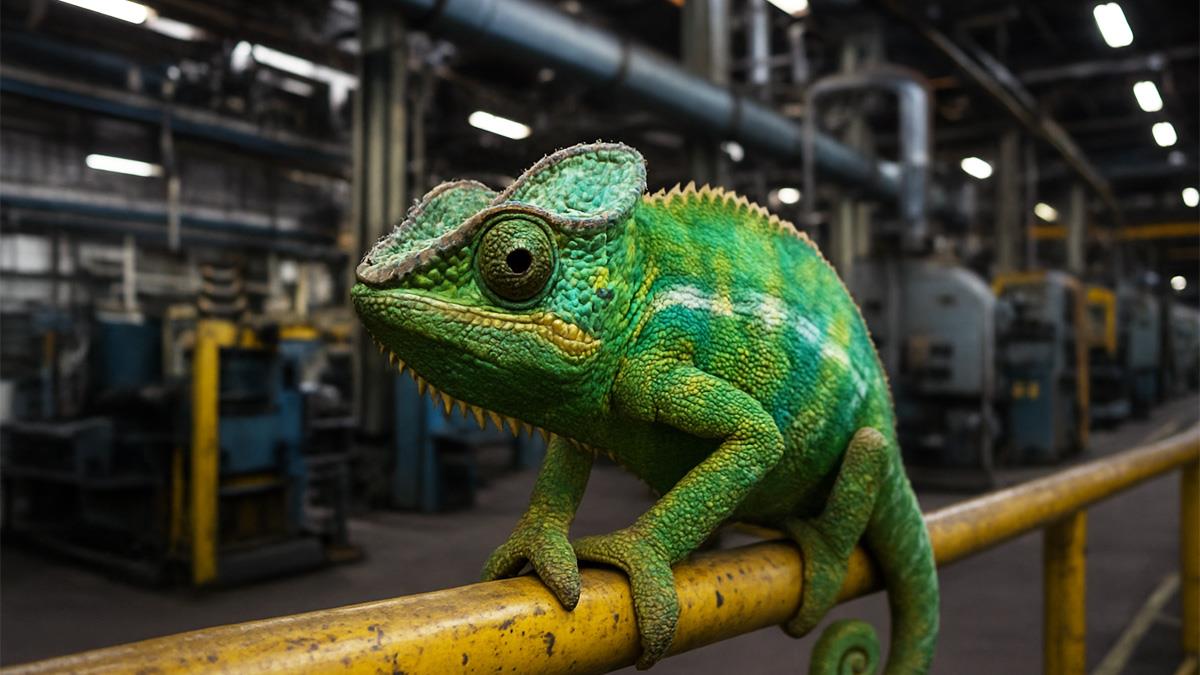
Change is an everyday companion. It affects your work continuously: a new piece of equipment, a change in a manager’s direction, a revised schedule, or a delayed lead time on a part. The reality is simple: change is going to happen. The choice is whether you’re ready for it.
Being change-ready doesn’t mean loving every new initiative. It means preparing yourself and those around you to adapt. It also means that to navigate the uncertainty, we understand how to keep things running even when there are more unknowns than certainties.
Change Readiness Is Not About Waiting
Some people think of “readiness” as waiting on the sidelines until they know what’s coming. That isn’t readiness. It’s stalling.
Change readiness is an active state. It is about being engaged in your current work while positioning yourself to handle what’s next. It is now more about sharpening your skills, scanning your environment, and building the relationships you’ll need to respond quickly and effectively when things shift.
Because your work is critical to any company mission, when things shift, and especially if the change catches you by surprise, the consequences aren’t just inconvenient, they can be dangerous. Even if readiness is an active state, there is still a process of psychological adjustment. This transition—often referred to as the 'in-between' space—is when the old way is gone but the new way isn’t yet clear. It can be disorienting, especially without technical guidance or leadership support.
When might this happen to you? Is it when the team is learning new technology on a machine, but no one quite understands it yet? When leadership changes and priorities shift without a clear explanation? Or a vendor’s delay forces you to improvise a fix you wouldn’t normally consider?
In these moments, familiar connections may be missing because something else is moving in. Since the brain is wired to anticipate what’s next, sudden uncertainty can be especially disruptive. And that uncertainty can trigger stress responses—overthinking, withdrawal, micromanagement, or perfectionism.
It may also feel like there is pressure to act without clear direction. The work still needs to get done, but the next steps are unclear.
The Constants You Can Count On
When uncertainty hits and that in between stage feels shaky, it can be reassuring to pause and name what’s not changing.
Even when processes, tools, or projects are shifting, there are always things that are not changing including commitments to safety, quality standards, the importance of up time, and the need for teamwork.
When we call these out for ourselves and those around us, it can be a point of stability. Something to hang on to. It reminds everyone that while methods may shift, the mission remains. When we get a moment of steadiness, confidence increases, and whatever challenge is in front of us may seem more possible.
The Choice of Readiness
Choice is a powerful reset that even when other things feel uncertain, focusing on what is within your control can make all the difference. That choice shows up in small daily actions. Look for opportunities throughout your day that seem minor but add up. For example, choosing to learn the new system rather than complain about it; choosing to share what you know about a piece of equipment with a new hire instead of letting them struggle; or choosing to ask, “What can we control right now?” when a project goes sideways.
Four Building Blocks of Change Readiness
Consider these four building blocks that can help you navigate the next change choice:
1. Openness
An open mind is the foundation of adaptability. In maintenance and reliability, this might mean welcoming suggestions from operators, vendors, or even other departments. It’s easy to default to “That’s not how we do things,” but every improvement starts as someone’s “new” idea.
Pro Move: Ask one “What if…” question each week in your team meetings. What if we scheduled PMs differently? What if we documented that workaround for future reference? What if we tried a different supplier for a difficult to locate part?
2. Flexibility
Flexibility doesn’t mean abandoning standards. It does mean being willing to adjust your approach while keeping the end goal in sight. This can be especially valuable when supply chain issues or equipment failures force you to improvise.
Pro Move: The next time you face an unexpected problem, pause before defaulting to your first solution. Ask, “What’s another way we could solve this?” Even if you stick with your original plan, you’ll have stretched your problem-solving muscles.
3. Clarity
In times of change, uncertainty multiplies without clear communication. Make sure you share the “why” when you can behind changes with the expected outcomes. It’s important to note what is expected in the meantime.
Pro Move: When you receive a change directive, translate it into specific, actionable points for yourself and others. If you don’t have enough details, ask for it when you can. Your willingness to seek clarity reduces stress and mistakes.
4. Connection
Strong relationships are your best insurance during transitions. People are more likely to share critical information, support each other, and solve problems collaboratively when trust is high.
Pro Move: Identify five key relationships that will help you be effective in your role, inside and outside your department. Invest time in those connections before you need them.
Leading Through the In-Between
Your approach to change will be noticed by others and influence them, too. While that space between “here and there” can feel uncertain, there are things you can do to be even more ready.
- Acknowledge reality without sugarcoating or blowing it up.
- Listen actively to concerns, frustrations, and ideas.
- Model adaptability by being willing to try, fail, and try again.
- Stay optimistic about the future while addressing present challenges.
Remember, it is important to meet people where they are, not where you expect them to be. This applies directly to change. Some people will adapt quickly. Others will need more time, explanation, or support. Your readiness isn’t just about you—it’s about helping others get ready, too.
The Pitfalls and Payoff of Change Readiness
There are two common traps I see during change and transitions:
Trap #1: Assuming everyone understands the change the same way
It is the most personal experience people have uniquely to them. As a result, there are a lot of different interpretations. Without good information shared multiple times and multiple ways, people will fill in the gaps with their own assumptions and those assumptions are rarely optimistic.
Trap #2: Focusing only on what is changing
This will raise fear, uncertainty and, likely, your blood pressure. Balancing the conversation with what’s not changing helps maintain stability and trust. It also helps ease the effects of change fatigue, when our instinctive reaction becomes, “Seriously, what now?”.
Being change ready isn’t just about surviving. It is about positioning yourself and those around you to thrive because of it.
What could this mean for you in maintenance and reliability? Shorter downtime because your team is both ready and supported with the right procedures, tools, and training to adapt quickly. Higher morale because people feel supported and informed. Better problem-solving because diverse perspectives are welcomed and acted upon. Do you know what else? A better, less stressed, more qualified…you.
Final Thoughts
Chameleons are my favorite metaphor for change readiness. A chameleon doesn’t become something else entirely—it adapts to its environment by reflecting change in a controlled way, yet this change is really a sign of being alert and ready. You can do the same in your role. You don’t have to become someone else; you just have to be willing to adjust and be ready to do so.
Change is going to happen. Your readiness…and what you do next, is a choice.




